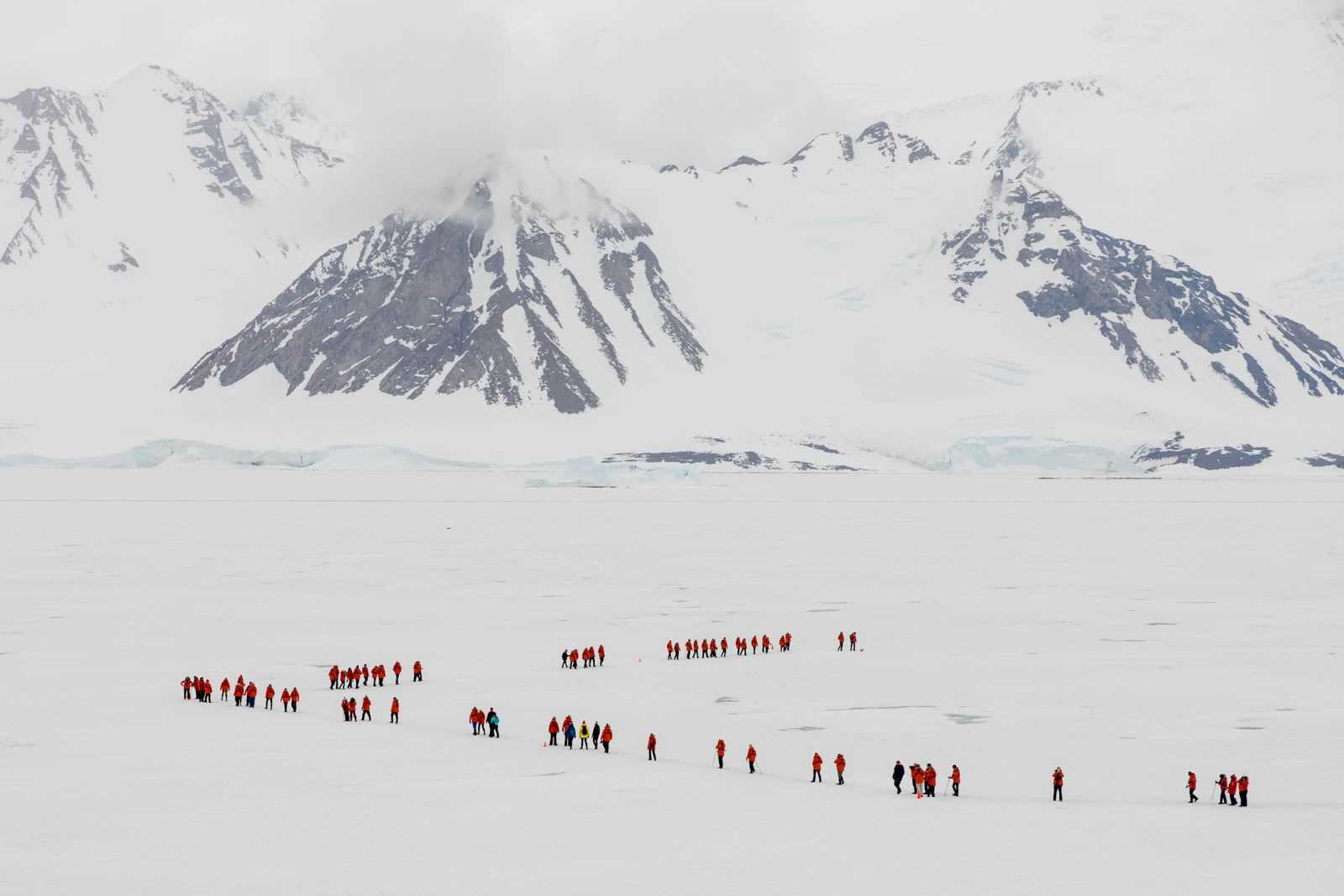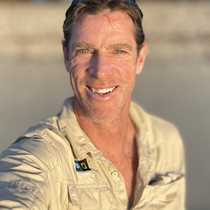Just before midnight last evening, National Geographic Explorer crossed over the imaginary line at 66 degrees 33 minutes south latitude or the Antarctic Circle for the first time this Antarctic season. Expedition leader Adam Crop had decided to take us farther south to a less visited area and hopefully away from the low cloud and precipitation we had been experiencing for the last few days. The decision was obviously the right one, for at breakfast time we were sailing into beautiful Marguerite Bay. With barely a breath of wind disturbing the sea surface, the crystal-clear air allowed us to take in the grandeur of the surrounding peaks. Tidewater glaciers flowed from every valley, spilling brash ice, growlers, and bergy bits into the bay. The mountains on the islands around the bay rise almost vertically from the shore to over three thousand feet.
The south end of the bay is bounded by Pourquoi Pas Island, named during the first decade of the last century by French explorer Jean-Baptiste Charcot who mapped and named many of the topographical features along this section of the coast. Wedged between a tidewater glacier and a vertical cliff in a large bay on this island lays a relatively flat shingle beach which is home to a couple of Adélie penguin rookeries and a number of attending skua families. This beach was chosen for our morning’s landing operation. While half of us went ashore to become acquainted with these purely Antarctic penguins and/or hike up to the edge of the glacier, the rest were taken by Zodiac farther into the bay to get a close-up view of the glaciers and take in the spectacular surrounding landscape. After a while the two groups swapped places to finish out the morning before returning to the ship for lunch.
During the early afternoon National Geographic Explorer continued southward through large areas of loose drifting pack ice with lots of lounging Weddell and crabeater seals. Eventually Captain Skog brought us into Neny Fjord where he drove the ship into the “fast” ice (ice which is still frozen fast to the shore). A gangway was lowered, and the ice proved strong enough to allow us all to walk off the ship and out onto the frozen sea. A great experience for all involved. We had also reached our farthest south at 68 degrees 14 minutes of south latitude.









